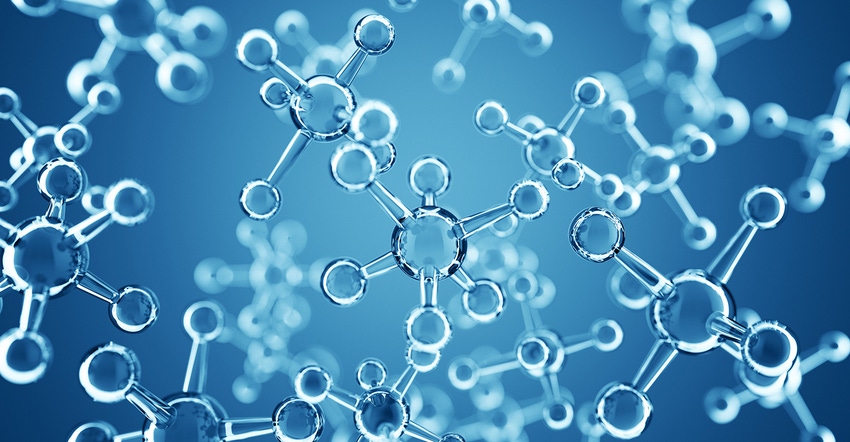Nanotechnology’s Favorable Future in Food Packaging
The nanotechnology market for food packaging is expected to increase 15% yearly driven by food waste-reducing innovations in material science and technology.
March 6, 2023

What’s become apparent over the past decade is the critical need to reduce food waste by improving food preservation and protection in safe, cost-effective ways.
That’s an opportunity to leverage emerging options in nanotechnology for food packaging that can reduce food and packaging waste. According to a forthcoming Future Market Insights report, nanotechnology used in food packaging is expected to increase 15% yearly from 2023 to 2033 driven by developments in material science and technology.
Nanotechnology is not new, and in fact was first introduced by Richard Feynman in 1959, though the term was first coined in 1974 by Norio Taniguchi.
Nanotechnology is defined as molecules in the range of one to 100 nanometers; for example, 100 nanometers is 0.0000039 inches.
The technology deals with nano-systems and nanomaterials, the latter of which are classified into three categories — nanofibers, nanoparticles, and nanoplates. Nanotechnology has application in numerous markets including packaging, nano-electronics, biomedical, security sensors, paints, textile, cosmetics, medical and healthcare, paper, construction, explosives and weapons, and lubricants among others.
Nanotechnology types and applications in food packaging.
There are various nanomaterials that are appropriate in this market including titanium nitride nanoparticle, silver nanoparticle and nano-zinc oxide, nano-clay and nano-titanium dioxide. These act as functional additives for food packaging. One of the most promising uses of the technology is in active packaging, which is packaging is designed to stop the growth of microbes once the packaging is opened by the customer. Available options include rewrapping with an active portion of the package.
Nanotechnology driven food packaging market has been categorized as follows:
Active Packaging. The use of nanomaterials is beneficial to interact directly with food to provide better protection to the product. Some nanomaterials such as nano-silver, nano-titanium dioxide, nano-copper oxide, carbon nanotubes and nano-magnesium oxide can provide antimicrobial properties.
Improved Packaging. To improve humidity resistance of packaging, temperature, and gas barrier, nanoparticles are combined with polymer chain as well as, temperature, humidity resistance of packaging. The US FDA has approved the use of nanocomposites in food contact.
Food packaging science expert Claire Sand, owner of Packaging Technology and Research, notes that nanoparticles can assist the barrier properties of food packaging by lengthening the torturous path of particles at the molecular level.
“It enhances a barrier by slowing diffusion and increasing the tortuous path that migrants such as water or oxygen need to travel,” she says. “It can be accomplished while staying within additive limits required for food safety and recyclability.
"This can reduce the amount of additive material needed versus a laminated sheet or coextrusion while adding barrier and strength. It’s especially advantageous when it reduces material costs.”
Sand provides a specific example whereby “a PET/foil laminate can be replaced with high-density polyethylene (HDPE)/linear-low-density PE coextrusion with silica nanofibers to maintain dead fold and barrier properties.”
Smart/Intelligent Packaging. This is designed for sensing microbial or biochemical changes in the food. It can detect the development of pathogens in the food. Some smart packaging has been developed to use as tracing devices for food safety. Currently, British Airways, MonoPrix supermarkets, and Nestlé are using chemical sensors, which can quickly detect a change in the packaged food.
Packaging with nano-sensors is helpful to identify internal and external conditions of food, and containers throughout the supply chain. Also, in plastic packaging, nano-sensors can detect gases in food when it spoils hereby the packaging changes color to alert the consumer.
Smart packaging using antimicrobial additives and nano-sensors to detect food spoilage.
In another method, antimicrobial additives and nano-sensors for smart packaging can detect spoilage of food and release nano-antimicrobials to extend shelf life. That helps supermarkets and hypermarkets to keep food fresh for longer period.
“For instance, the nano-sensor could alert the presence of carbon dioxide, which is one of the by-products of microbial growth,” Sand explains.
She also points to another use of nanotechnology in these markets. “Nanoparticles can provide covert battery sources to power intelligent packaging.”
On a related note and according to the FMI analyst, other options include so-called electronic noses, nano-cantilevers, array biosensors, nano-test strips, and nanoparticles in solution.
These insights are based on a report Nanotechnology for the Food Packaging Market by Future Market Insights that will be released in May.
You May Also Like


